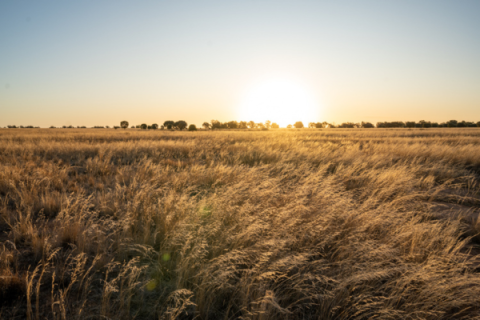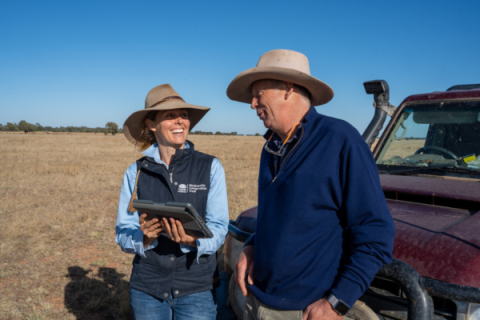Jim and Jane Ives have been running cattle on their 10,000-hectare property Glencoe, near Hay, for more than 30 years.
For much of that time they’ve practiced regenerative agriculture to improve the resilience of their soil, water resources and fragile biodiversity. That approach to farming was a decision that helped preserve the property’s natural attributes, and the local plains-wanderer population.
It was an unplanned benefit, according to Jim, because the family didn’t know it had endangered plains-wanderers on the property until they heard about the Local Land Services (LLS) Paddocks for Plains-wanderers incentive program in 2017.
“We'd heard a few people talk about them but had never seen them on our property,” Jim said.
"Once we started actively looking for them, we saw a few when we were out spotlighting for foxes at night. Now we recognise their habitat, and don't think they are just quail anymore.”

Jim and Jane entered into a funded agreement with the NSW Biodiversity Conservation Trust after they submitted an expression of interest to the Plains-wanderer conservation tender in 2021, following up with a bid price for managing the species and its habitat on their land.
They now receive annual payments for implementing an agreed management plan to protect and manage native grasslands on the 1700.5 hectares they have marked on their property title as a conservation area for the plains-wanderer.
“We really aren’t doing a lot different to what we were before,” he said.

“There is a fair bit of monitoring involved, which is what we do with rotational grazing anyway, we just do some extra monitoring on top of that.
“We think this is going to help our business because it’s more thorough and we have experts on board helping us.
“To be able to run our business and help the plains-wanderer at the same time is something we feel really strongly about. We all win.”
About the plains-wanderer
The plains-wanderer is a small quail-like bird standing about 12-15 cm tall. More than 99 per cent of records of plains-wanderers in NSW over the past 30 years come from an area of the western Riverina bounded by Hay and Narrandera on the Murrumbidgee River in the north, the Cobb Highway in the west, the Billabong Creek in the south, and Urana in the east. The range and numbers of the birds are affected by the quality of the habitat available to them, which in the western Riverina, can change during very wet or very dry years, when grasslands become too dense or too bare.